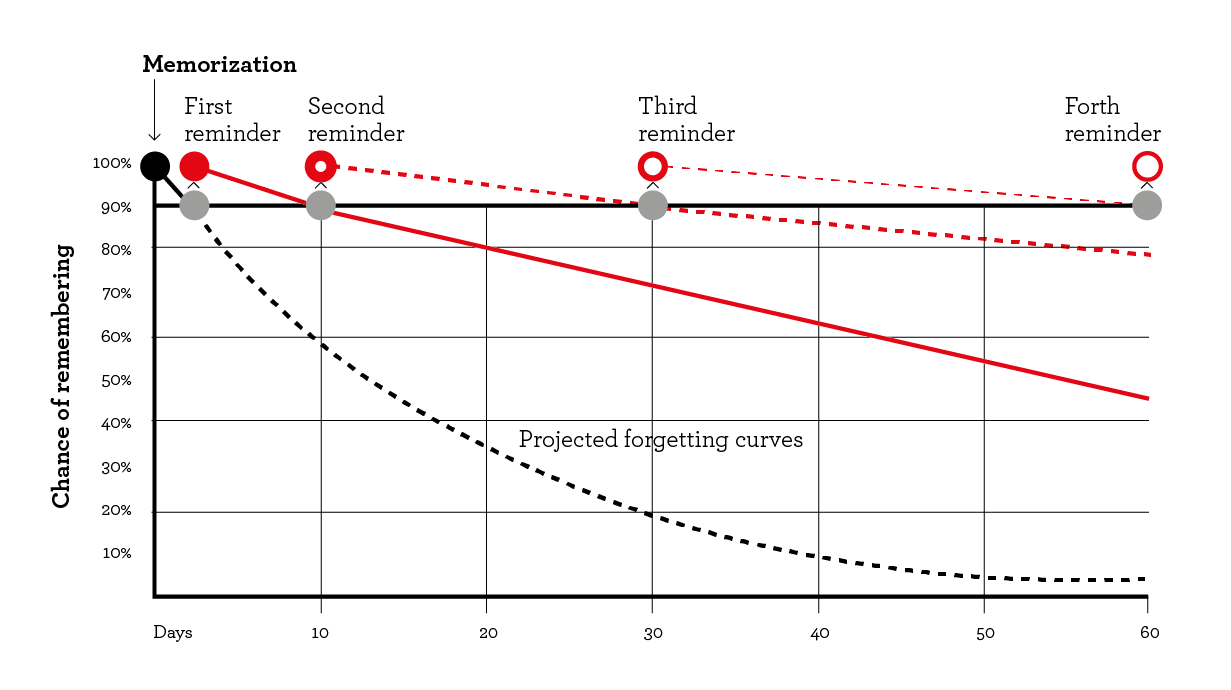
4 ways ‘cramming’ is killing your sales
When you were young, did you ever stay up all night “cramming” for a test? Did the adults in your life criticize you for this behavior, and explain to you that you would learn better if you studied a little at a time instead of all at once?
You may have ignored the advice, but it turns out that, like many of the things your parents told you and you ignored, it was good advice.
And science has the receipts.
In 1885, a man by the name of Hermann Ebbinghaus published a book called “On Memory,” in which he revealed the findings of experiments he’d conducted on how people learn and how we forget.
One of those findings came to be called the “spacing effect.” The “spacing effect” is a quality of human learning that means you learn information better when it is presented to you repeatedly with intervals of time between repetitions, than if exposed to the same information for the same amount of time and with the same number of repetitions, but all at once (called “massing”).

Image rights: Farnham Street
This effect has been validated repeatedly by research since, in human and animal trials, and is well-known and used in advertising and marketing. It’s why advertisers know to space their ads out rather than massing them all in a row.
It’s also one of the reasons your sales team isn’t performing as well as they could be, especially if you operate in a complex b2b environment. Here are 4 reasons why.
1. You’re relying on salespeople to cram info into buyers
In a complex b2b environment, there may be days, weeks, or even months that pass between meetings with individual prospects. That’s a lot of time during which buyers, distracted by other priorities, can forget all the important things your salespeople have skillfully taught them.
This problem is made worse if you’re relying on salespeople to “present” info in one or two big meetings, rather than in a structured and repetitive format over time.
Or perhaps you haven’t provided your salespeople with structure at all, in which case, they’re “cramming” info into one or two meetings because they don’t know there are better options.
A better approach is to establish a clear milestone-based process, with a cadence that matches the way buyers buy, and that presents multiple opportunities for salespeople and the marketing department to put targeted information in front of buyers repeatedly, in different ways and different formats.
Some salespeople do this instinctively, knowing that “staying in front of” the customer is important and tailoring the message to what inspires motivation for the individual stakeholders. You can learn from the pacing of your best salespeople to establish a good cadence for your other salespeople to emulate.
2. Buyers demand “info dumps”... and your salespeople comply
Many buyers think they know what they want before they even get on the phone with your salespeople, and instead of conducting a discovery call, your team members find themselves answering a barrage of questions.
This happens especially often in complex b2b sales where a low-level employee may have been tasked with doing the research for a decision maker. Instead of discussing problems and solutions with your representative, these employees may create a spreadsheet and demand data to fill in, in order to create a comparison chart for the decision maker.
But it can also happen with C-level executives, who may feel pressed for time and just want you to give them all the info, right now.
Salespeople need skills and tools for reaching higher levels of the organization and having true value discussions. A value discussion improves retention by engaging the buyer in the process, and also opens the doors for the salesperson to have ongoing (repetitive, spaced) conversations with the buyer.
We especially like the DecisionLink solution for this, as it produces beautiful deliverables that help prospects visualize the financial benefits of the solution, and encourages their engagement over time to fine-tune the results.
3. Coaches “info dump” feedback on salespeople
The worst offenders here are managers who only provide feedback during annual reviews. Information delivered this way can be motivating or demotivating, helpful or unhelpful… but it will never produce long-lasting effects in any but the most motivated and disciplined employees.
Even managers who actively coach on a regular basis can fall prey to the “info dump” problem. You may see everything that a salesperson is doing wrong, and feel like you should be able to tell them once and expect them to fix the problems themselves. But then they never do, and it’s a frustrating situation for everyone.
A better approach is to focus on one or two areas that each salesperson can improve, use open-ended questions to guide the salesperson to understand and solve their own problems, and set a regular cadence for checking in and reinforcing the information and coaching you offer.
4. Your training isn’t reinforced
Despite lots of evidence that one-off training is highly ineffective, many organizations still lump all their sales education into a few hours of classroom work mixed with inspirational speakers, and call it “training.”
Some organizations do a better job of offering training and reinforcement throughout the year. But very few organizations do this in a systematic manner or reinforce and support the classroom training within the salesperson’s daily workflow.
Protect your training investment by delivering training in both a cadenced manner and on-demand, throughout the year.
We’re proud of the way Membrain’s sales enablement tools allow you to embed training videos and other content directly inside the salesperson’s workflow, to be offered up exactly when they need it to reinforce a new skill or behavior.
Coaches can help too by staying on top of what each salesperson needs to learn, and checking in with them regularly with reminders, questions, and feedback.
I’d love to show you all the ways Membrain makes it easy for you to execute the right sales cycle cadence, training pacing, and much more to make the best use of the spacing effect on your team. Contact us for a demo.

By George Brontén
George is the founder & CEO of Membrain, the Sales Enablement CRM that makes it easy to execute your sales strategy. A life-long entrepreneur with 20 years of experience in the software space and a passion for sales and marketing. With the life motto "Don't settle for mainstream", he is always looking for new ways to achieve improved business results using innovative software, skills, and processes. George is also the author of the book Stop Killing Deals and the host of the Stop Killing Deals webinar and podcast series.
Find out more about George Brontén on LinkedIn







